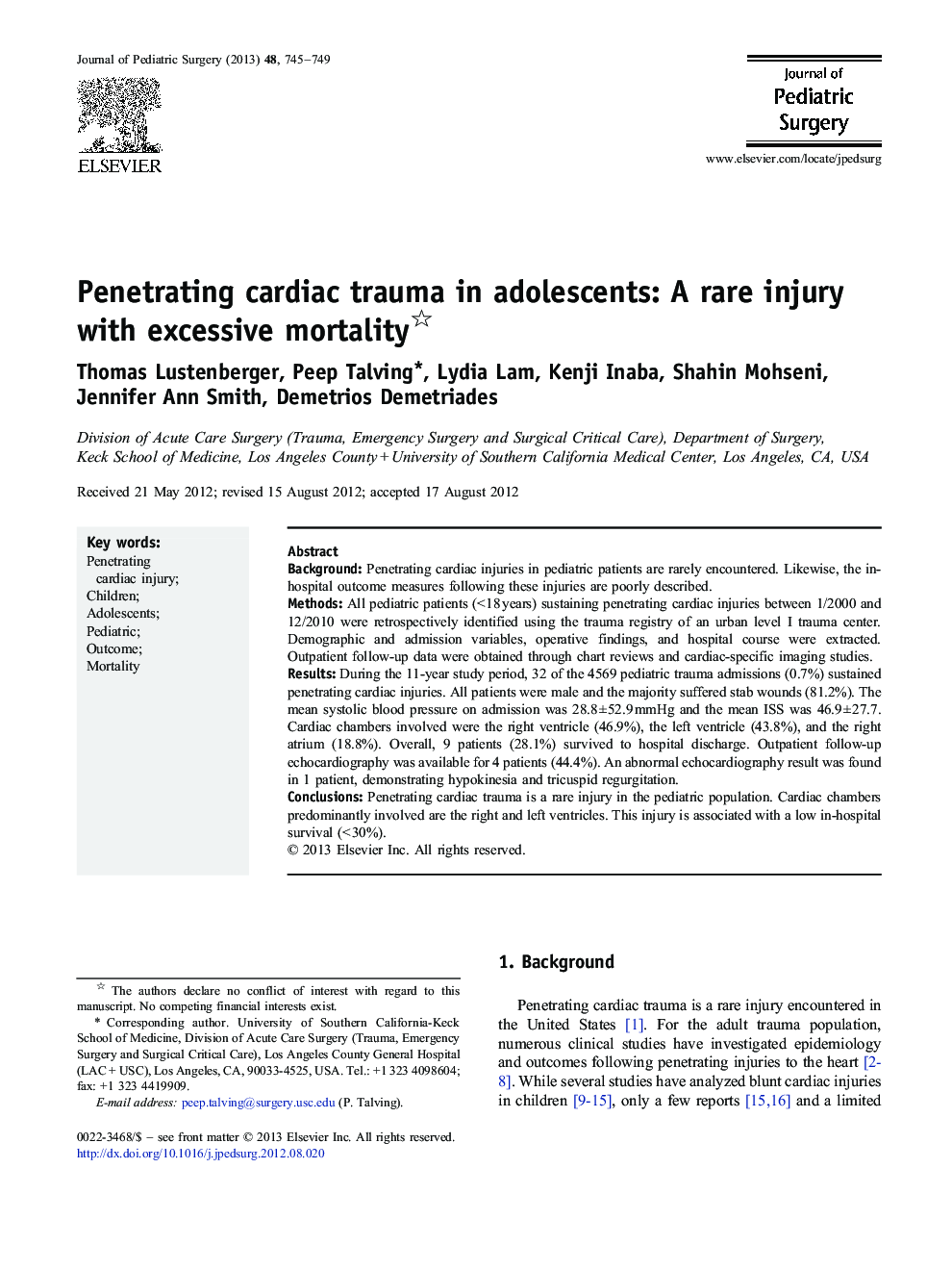| Article ID | Journal | Published Year | Pages | File Type |
|---|---|---|---|---|
| 6217661 | Journal of Pediatric Surgery | 2013 | 5 Pages |
BackgroundPenetrating cardiac injuries in pediatric patients are rarely encountered. Likewise, the in-hospital outcome measures following these injuries are poorly described.MethodsAll pediatric patients (< 18 years) sustaining penetrating cardiac injuries between 1/2000 and 12/2010 were retrospectively identified using the trauma registry of an urban level I trauma center. Demographic and admission variables, operative findings, and hospital course were extracted. Outpatient follow-up data were obtained through chart reviews and cardiac-specific imaging studies.ResultsDuring the 11-year study period, 32 of the 4569 pediatric trauma admissions (0.7%) sustained penetrating cardiac injuries. All patients were male and the majority suffered stab wounds (81.2%). The mean systolic blood pressure on admission was 28.8 ± 52.9 mmHg and the mean ISS was 46.9 ± 27.7. Cardiac chambers involved were the right ventricle (46.9%), the left ventricle (43.8%), and the right atrium (18.8%). Overall, 9 patients (28.1%) survived to hospital discharge. Outpatient follow-up echocardiography was available for 4 patients (44.4%). An abnormal echocardiography result was found in 1 patient, demonstrating hypokinesia and tricuspid regurgitation.ConclusionsPenetrating cardiac trauma is a rare injury in the pediatric population. Cardiac chambers predominantly involved are the right and left ventricles. This injury is associated with a low in-hospital survival (< 30%).
